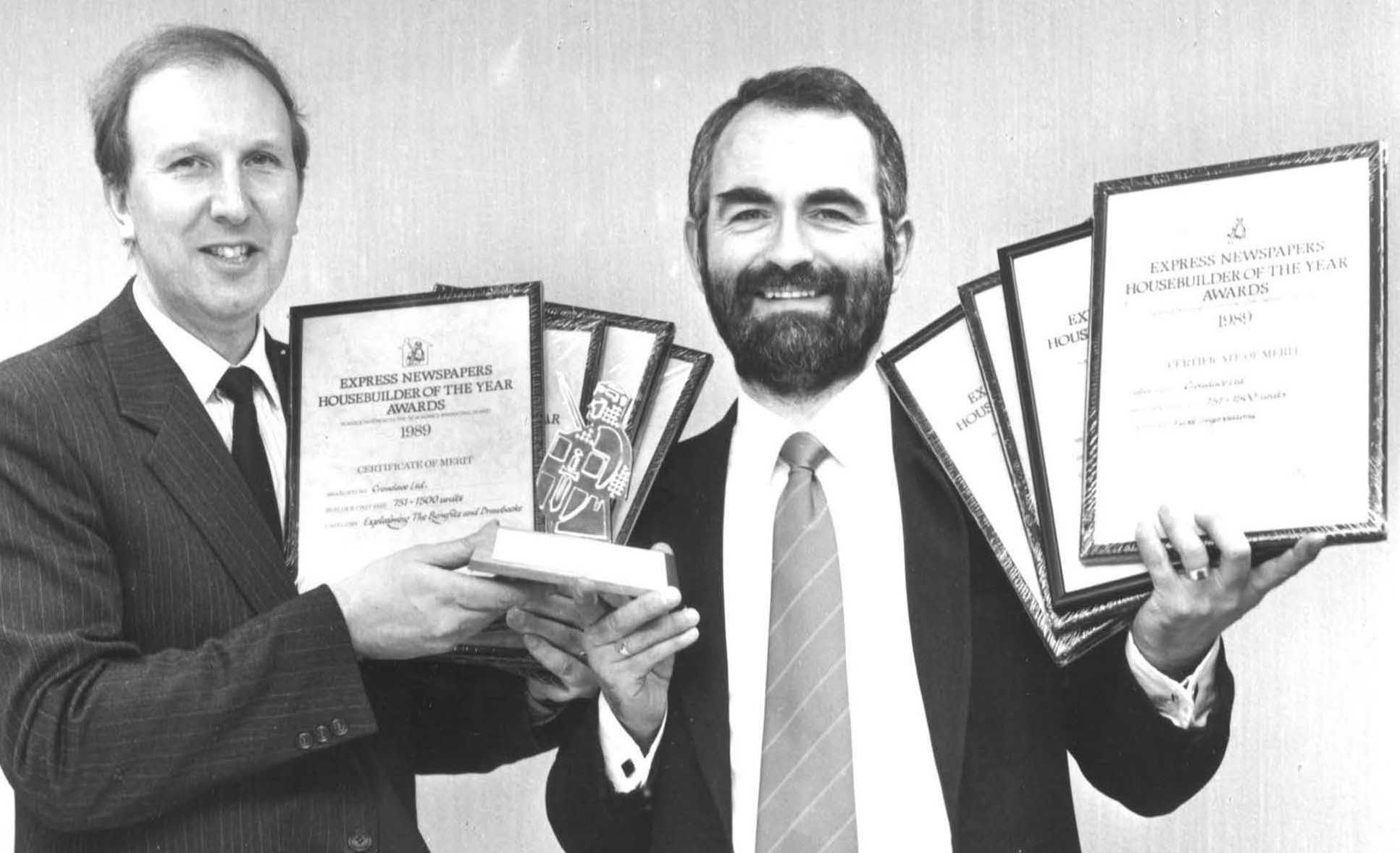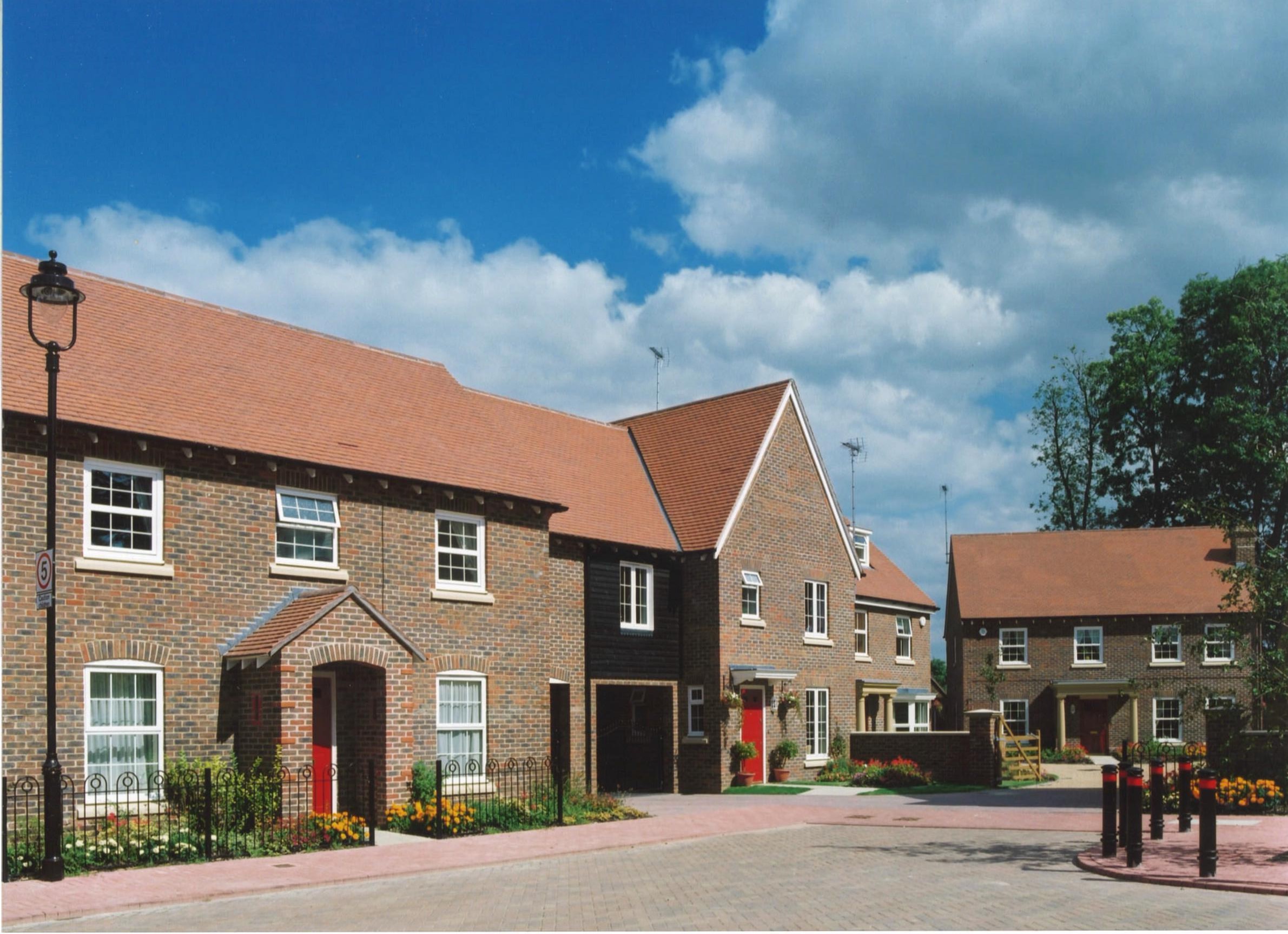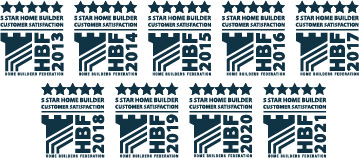
Oliver R Croudace Ltd is established as a building company in 1946 by friends and neighbours, Oliver R. Croudace and Jack Brotherton-Ratcliffe. The company’s initial work is the repair and clearance of properties that had suffered serious damage during World War II.
Croudace secures its first new build contract to build 200 council houses in Bletchingly, Surrey, for Godstone Rural District Council.


Post-war restrictions on private housebuilding are lifted and the company begins to shift it’s focus to private housing. The company’s first private development is at Haroldslea Close in Horley. Croudace purchases land for 22 houses, at £100 per house. The development is completed in 1954. Two bedroom houses sell for £1690, three bedroom houses sell for £2100.
The company name is changed to Croudace Ltd and is now owned entirely by Jack Brotherton-Ratcliffe.


Croudace obtains planning consent for a new Village development of 800 homes in Vigo Village, a former army camp near Meopham in Kent. The scheme is designed to the New Town concept with main access to houses via pedestrian footpath routes rather than roads. Vigo Village is a self-contained community with a full range of house types separated by significant areas of woodland. It has its own shopping centre and school and is Croudace’s first large-scale housing development.
Croudace purchases Maybrook Properties PLC.


Croudace exceeds its target of completing 1,000 new homes in a year. Croudace also starts to expand out of its traditional southern home counties market to northern and western regions.
The determined drive to expand its housing volumes sees Croudace embark upon a £350m scheme to create a new community at Church Langley in Harlow, Essex. The joint venture with Countryside Properties and Woolwich Building Society sees the creation of 3,500 homes along with shops, a primary school, health centre, church, public house, community buildings, a large park, public open spaces and woodland.



Croudace partners with Norway’s leading housebuilder, Block Watne, to set up a project that combines stylish Norwegian interior design and technology with traditional British building techniques. The result is The Norseman house type. The first show home is opened at the Cornfields development in Didcot.
With difficult market conditions for private housing, the Government commits funds to public housing directed through housing associations rather than local councils. In response, Croudace establishes the Croudace Housing in Partnership division (CHiP). The division becomes a major source of revenue for Croudace.


Croudace’s long record of safety on construction sites is recognised when the company wins the coveted British Safety Council award for fifteen years of continuous effort to achieve higher safety standards.
Encouraged by the success of the development in Harlow, Essex, Croudace embarks upon another large private housing development. A joint venture with Bovis Homes and Countryside Properties. The creation of a new neighbourhood at Great Ashby in Stevenage features 1600 homes, a community centre, shops, a school, a district park and a nature reserve.


Aged 81 years old, Jack Brotherton-Ratcliffe resigns from the board of Croudace and his son Tony Brotherton-Ratcliffe takes on the position of Non-Executive Chairman.
Riverside Gardens in Newbury, Buckinghamshire, is one of the first
developments in the country to ‘pepperpot’ affordable homes in
amongst private houses. The development wins the Silver Award
for Best Partnership Development in the What House? Awards.
Work begins on Croudace’s flagship, eco-friendly development in
Basingstoke. Sherfield Park features 1000 private and affordable
homes, all to a new Georgian inspired design, with some rising
to four storeys. The scheme is also designed to enhance the
biodiversity of the land and to feature homes built to higher
environmental standards, a precursor to the future homes
standard.



Croudace launches Kickstart, a shared-equity scheme aimed at first-time buyers and easing problems with deposits. Purchasers are required to take out a mortgage for at least 85% of the purchase price and the remaining 15% is funded through an interest free loan from Croudace. The Kickstart initiative is highly successful and becomes a forerunner of the Government’s Help to Buy Scheme.
Croudace undergoes rebranding that brings all divisions of Croudace under one identifiable Croudace Homes Group banner, incorporating Croudace Homes, Croudace Partnerships, Croudace Strategic and Croudace Portland.



Croudace is successful in its first attempt to achieve a 5 star rating from the Home Builders Federation. The annual survey, completed by home owners, is a key measure of performance for housebuilders in the UK. In the nine years that Croudace has been eligible to participate in the public survey, Croudace has received the maximum 5 star rating each year.
Tony Brotherton-Ratcliffe retires from his position as Non-Executive Chairman of the Croudace Homes Group. His nephew, Caspar Brotherton, is named as his successor.


Over the past 75 years Croudace Homes Group has earned a considerable reputation for building high-quality homes that suit the needs, aspirations and finances of a broad range of households. Our sustainable developments are crafted with outstanding architectural design and placemaking. They are built safely and efficiently, whilst being sensitive to the demands of being a good neighbour to the communities in which Croudace operates. Innovative sales and marketing techniques are tuned to the lifestyles of customers to ensure they receive a first-class service, as well as comfort and reassurance in buying a Croudace home. Croudace believes that its people are its most important asset.